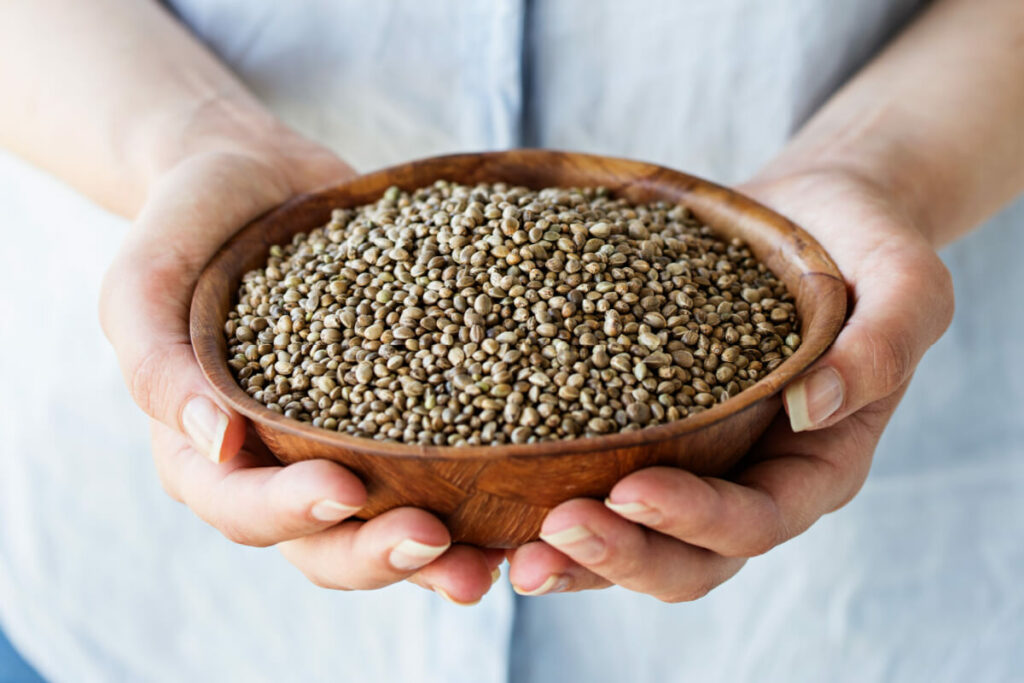What are functional foods? They’re foods that exceed basic nutrition and benefit at least one function in the human body. (2) Functional foods naturally contain beneficial and essential nutrients, or they can be modified for added health benefits, such as foods that are enriched with certain vitamins and minerals. (3)
Incorporating more functional foods into your diet can help you increase your nutrient intake and reap the health benefits of a wide variety of nutrients. A balanced diet consisting of adequate amounts of protein, carbohydrates (including dietary fiber), and healthy fats can help you stay fuller longer while ensuring your body obtains the nutrients it needs to perform at its best. (6)
Health benefits of functional foods
Eating ample amounts of functional foods is a way to add even more nutrients to your daily diet. The added nutritional benefits may help to:
- Improve brain function
- Increase energy
- Prevent disease
- Prevent nutrient deficiencies
- Promote proper growth and development
- Support immune function (6)
Functional foods examples
Some examples of naturally nutrient-dense functional foods are fruits and vegetables because they are rich in antioxidants. Antioxidants are molecules that fight free radicals in our bodies. If the level of free radicals becomes too high they can cause illnesses such as cancer and diabetes. (10) Eating functional foods high in antioxidants like fruits and vegetables may help to prevent disease. (13)
Other naturally sourced functional foods include nuts, seeds, fatty fish, oats, and soy. (6) Sprinkle some chia or hemp seeds into your next smoothie and make salmon for dinner. Your morning cup of coffee and black or green tea are also considered functional foods. (4) Some of the modified functional foods to include in your diet are fortified eggs, healthy juices, and unsweetened granolas.
9 functional foods to include in your diet
Outlined below are nine examples of naturally derived functional foods with a high nutritional value.
1. Berries
Berries have been called a “superfood” for years. That’s because they’re rich in nutrients and vitamins. (15)

2. Broccoli
Did you know that just one cup of cooked broccoli has as much vitamin C as one medium orange? (12) Broccoli also contains a chemical called sulforaphane which may help with type 2 diabetes, as it reduces the production of sugar by the liver and improves sugar control in patients with type 2 diabetes. (1)
3. Almonds
Like berries, almonds are also rich in antioxidants. One study found that consuming almonds may help to prevent and manage high cholesterol. (8)

4. Hemp seeds
Hemp seeds are loaded with nutritional benefits including two types of essential fatty acids, omega-6 and omega-3. They are also a good source of iron, zinc, calcium, and more. (14)
5. Chickpeas
Rich in dietary fiber, plant-based protein, vitamins, and minerals, chickpeas may also help with improving digestion and lowering the risk of certain diseases like diabetes and heart disease. This is because chickpeas and hummus can help regulate blood sugar and insulin. (16)

6. Oats
Oats may help lower blood cholesterol and improve blood sugar because they are packed with protein, fiber, calcium, vitamins, and amino acids. Not only that, since these whole grains are a good source of fiber they’ll help to keep you full for longer. (9)
7. Salmon
The human body can’t make the essential fatty acid omega-3 on its own. However, you can obtain omega-3s from fatty fish like salmon. Omega-3 fatty acids have been shown to help reduce the risk of cardiovascular disease and Alzheimer’s disease. Omega-3s may also improve brain function. (7)

8. Cinnamon
Research has shown that cinnamon may be helpful for people with diabetes as it may lower blood sugar due to its blood sugar lowering properties. Cinnamon also has antioxidant and anti-inflammatory properties. (5)
9. Coffee
Coffee is widely consumed in the morning for its caffeine content and energy-boosting effects, but some studies say that drinking coffee could also be associated with preventing some chronic diseases such as type 2 diabetes,and liver disease. This is due to its effects through an antagonism of the adenosine receptors. (11)
The bottom line
Eating a diet rich in both natural and fortified functional foods may enhance health by increasing the number and variety of nutrients your body absorbs. Speak with your integrative healthcare practitioner before making any major changes to your diet.
- Axelsson, A. S., Tubbs, E., Mecham, B., Chacko, S., Nenonen, H. A., Tang, Y., Fahey, J. W., Derry, J. M. J., Wollheim, C. B., Wierup, N., Haymond, M. W., Friend, S. H., Mulder, H., & Rosengren, A. H. (2017, June 14). Sulforaphane reduces hepatic glucose production and improves glucose control in patients with type 2 diabetes. Science Translational Medicine, 9(394).
- Baker, M. T., Lu, P., Parrella, J. A., & Leggette, H. R. (2022, January 22). Consumer acceptance toward functional foods: A scoping review. International Journal of Environmental Research and Public Health, 19(3), 1217.
- Cencic, A., & Chingwaru, W. (2010, June 1). The role of functional foods, nutraceuticals, and food supplements in intestinal health. Nutrients, 2(6), 611–625.
- Dórea, J. G., & da Costa, T. H. M. (2005, June). Is coffee a functional food? British Journal of Nutrition, 93(6), 773–782.
- Gruenwald, J., Freder, J., & Armbruester, N. (2010, September 30). Cinnamon and Health. Critical Reviews in Food Science and Nutrition, 50(9), 822–834.
- Hasler, C. M. (2002, December 1). Functional Foods: Benefits, Concerns and Challenges—A Position Paper from the American Council on Science and Health. The Journal of Nutrition, 132(12), 3772–3781.
- Horrocks, L. A., Yeo, Y. K. (1999). Health benefits of docosahexaenoic acid (DHA). Pharmacological Research, 40(3), 211–225.
- Kalita, S., Khandelwal, S., Madan, J., Pandya, H., Sesikeran, B., & Krishnaswamy, K. (2018, April 11). Almonds and Cardiovascular Health: A Review. Nutrients, 10(4), 468.
- Kim, I. S., Hwang, C. W., Yang, W. S., & Kim, C. H. (2021, September 13). Multiple Antioxidative and Bioactive Molecules of Oats (Avena sativa L.) in Human Health. Antioxidants, 10(9), 1454.
- Lobo, V., Patil, A., Phatak, A., & Chandra, N. (2010). Free radicals, antioxidants and functional foods: Impact on human health. Pharmacognosy Reviews, 4(8), 118.
- Nieber, K. (2017, July 4). The impact of coffee on health. Planta Medica, 83(16), 1256–1263.
- Office of Dietary Supplements – Vitamin C. (n.d.). https://ods.od.nih.gov/factsheets/VitaminC-HealthProfessional/
- Pem, D., Jeewon, R. (2015). Fruit and Vegetable Intake: Benefits and Progress of Nutrition Education Interventions- Narrative Review Article. Iran J Public Health. 44(10):1309-21.
- Rodriguez-Leyva, D., & Pierce, G. N. (2010). The cardiac and haemostatic effects of dietary hempseed. Nutrition &Amp; Metabolism, 7(1), 32. https://doi.org/10.1186/1743-7075-7-32
- Salo, H. M., Nguyen, N., Alakärppä, E., Klavins, L., Hykkerud, A. L., Karppinen, K., Jaakola, L., Klavins, M., & Häggman, H. (2021, August). Authentication of berries and berry‐based food products. Comprehensive Reviews in Food Science and Food Safety, 20(5), 5197–5225.
- Wallace, T., Murray, R., & Zelman, K. (2016, November 29). The nutritional value and health benefits of chickpeas and hummus. Nutrients, 8(12), 766.



